Sitting or Standing: Tips for Treating Your Body Well at Work

Whether working from home, in an office, or at a desk, many individuals spend too much time on their feet or in a chair, depending on the physical demands of their job.
It’s easy for those who work on a computer to spend more time sitting than recommended. Conversely, those in the service industry, teachers, retail workers, law enforcement officials, and nurses experience the opposite problem: being on their feet all day. Despite what fitness trackers may indicate, this is not always a good thing.
Workers in all sectors can take steps to offset the negative effects of prolonged sitting or standing. Read on to learn what constitutes excessive sitting and standing, the associated health risks of prolonged sitting and standing, exercise recommendations for adults and children, and how to enjoy an ergonomically healthier lifestyle.
Table of Contents
Jump to:
How Much Sitting or Standing Is Too Much?
Who Is Affected by Excessive Sitting and Standing?
What Are the Consequences of Prolonged Sitting or Standing?
How to Treat Your Body Better by Balancing Time Sitting and Standing
Cultivating a Healthy Lifestyle While Working from Home
How Much Sitting or Standing Is Too Much?

Sitters
People who sit for more than four hours per day lead a sedentary lifestyle. This includes adults who exercise regularly after work. Even just one hour of sustained sitting causes blood to pool in the legs.
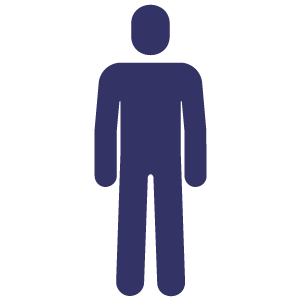
Standers
Risks begin to manifest for those who stand more than four hours per day. What constitutes “too much” standing can also change based on the circumstances. For instance, it is recommended that pregnant women avoid standing for prolonged periods of time.
Sources:
- Victoria Trades Hall Council’s Occupational Health and Safety Unit. (n.d.). Sedentary work. OHSRep.org.au Accessed November 23, 2021.
- Thosar, S.S., Bielko, S.L., Mather, K.J., Johnson, J.D., & Wallace, J.P. (2015). Effect of prolonged sitting and breaks in sitting times on endothelial function. Medicine & Science in Sports & Exercise, 47(4), 843–849. doi:10.1249/MSS.0000000000000479 Accessed November 23, 2021.
Who Is Affected by Excessive Sitting and Standing?
Individuals who hold full-time jobs spend the majority of their waking lives at work. This means that a person’s activity level at work can have a dramatic impact on health, regardless of their exercise routine outside of work.
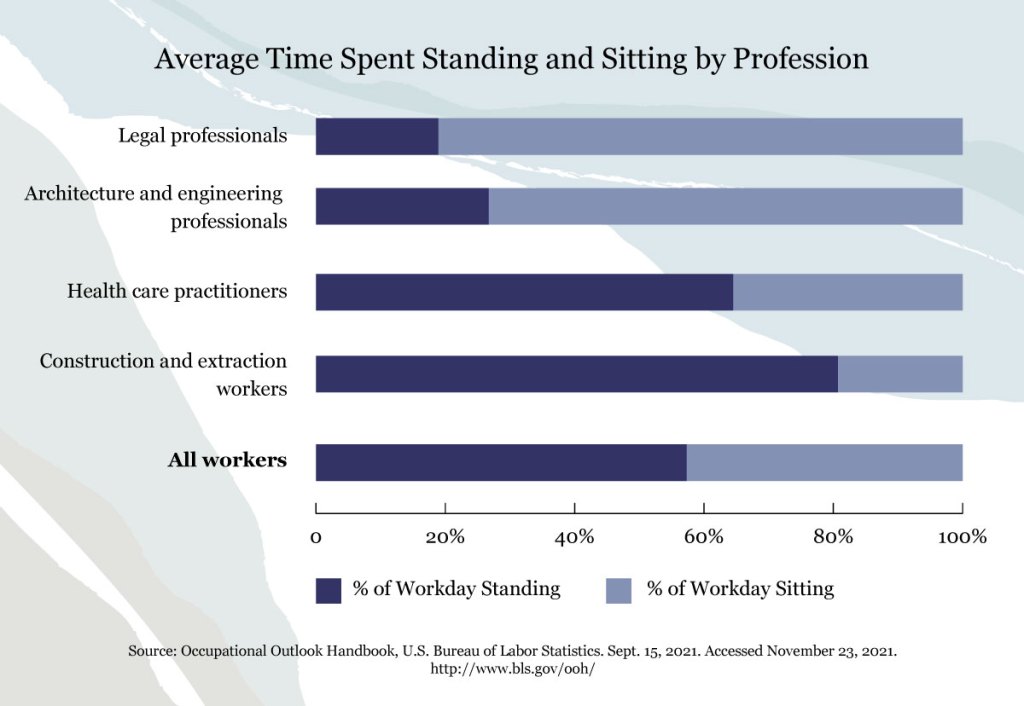
Legal professionals spend 18.9% of their workday standing and 81.1% of their workday sitting. Architecture and engineering professionals spend 26.7% of their workday standing and 73.3% of their workday sitting. Health care practitioners spend 64.5% of their workday standing and 35.5% of their workday sitting. Construction and extraction workers spend 80.7% of their workday standing and 19.3% of their workday sitting. All workers spend 57.3% of their workday standing and 42.7% of their workday sitting.
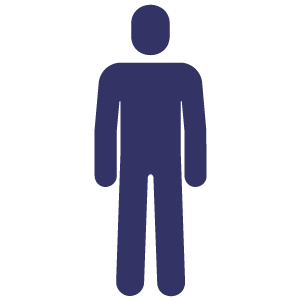
Common upright occupations in the United States:
- nurses: 3.08 million jobs
- teachers (K–12): 2.5 million jobs
- wait staff: 2.02 million jobs
- hairdressers and barbers: 622,700 jobs
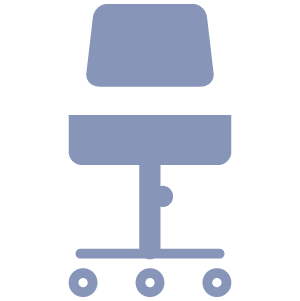
Common sedentary occupations:
- passenger vehicle, delivery truck, and tractor-trailer drivers: 4.32 million jobs
- secretaries and administrative assistants: 3.36 million jobs
- writers and authors: 143,200 jobs
- computer programmers, computer systems analysts, and software developers: 2.64 million jobs
Source: Occupational Outlook Handbook, U.S. Bureau of Labor Statistics. Sept. 15, 2021. Accessed November 23, 2021.
What Are the Consequences of Prolonged Sitting or Standing?
Potential Ailments
A sedentary lifestyle contributes to the following:
- neck stiffness
- heart disease
- lower back pain
- obesity
- restless legs
Too much time on your feet contributes to the following:
- neck and shoulder stiffness
- lower back pain
- pain and aching in the legs and feet
- pronation of the feet (flat feet)
- heel spurs and plantar fasciitis
Long-term Health Risks

Sitting
19%
The increase in risk of death for adults who sit for at least six hours per day
17%
The increase in risk of developing diabetes for adults who sit for at least eight hours a day
54%
The increase in risk of dying from a heart attack for people who sit for most of the day
Other health risks include obesity, increased blood pressure, high blood sugar, increased body fat around the waist, abnormal cholesterol levels, increased risk of death from cardiovascular disease and cancer.
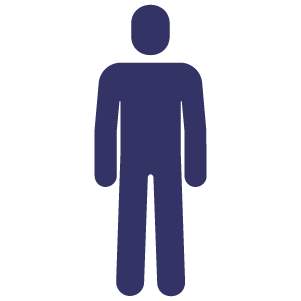
Standing
128,220
The approximate number of back injuries to private-industry workers in 2020 that involved days away from work for those injured
192,340
Number of injuries to lower extremities (including knees, ankles, and feet) in 2020 that resulted in private industry workers taking time off from work
40%
Estimated prevalence of chronic venous insufficiency, a condition in which veins fail to pump enough blood back to the heart, in the U.S. population. The condition is exacerbated by excessive standing and sitting.
Other health risks include lower back, leg, and foot pain, fatigue, cardiovascular problems, neck and shoulder discomfort, pregnancy issues including preterm births.
Sources:
- Patel, A.V., Maliniak, M.L., Rees-Punia, E., Matthews, C.E., & Gapstur,
S.M. (2018). Prolonged leisure time spent sitting in relation to cause-specific mortality in a large U.S. cohort. American Journal of Epidemiology, 187(10), 2151–2158. doi:10.1093/aje/kwy125 Accessed November 23, 2021. - Asvald, B.O., Midthjell, K., Krokstad, S.. Rangul, V., & Bauman, A. (2017). Prolonged sitting may increase diabetes risk in physically inactive individuals: An 11-year follow-up of the HUNT Study, Norway. Diabetologia, 60, 830–835. doi:10.1007/s00125-016-4193-z Accessed November 23, 2021.
- Lavie, C.J., Ozemek, C., Carbone, S., Katzmarzyk, P.T., & Blair, S.N. (2019). Sedentary behavior, exercise, and cardiovascular health. Circulation Research, 124(5) 799–815,. doi:10.1161/CIRCRESAHA.118.312669 Accessed November 23, 2021.
- Laskowski, E.R. (2020, August 21). What are the risks of sitting too much? Mayo Clinic. Accessed November 23, 2021.
- Bureau of Labor Statistics, U.S. Department of Labor, Survey of Occupational Injuries and Illnesses. (2021, November 3). Injuries, illnesses, and fatalities. U.S. Bureau of Labor Statistics. Accessed November 23, 2021.
- Cleveland Clinic. (2019, May 14). Chronic venous insufficiency (CVI). ClevelandClinic.org. Accessed November 23, 2021.
- Waters, T.R., & Dick, R.B. (2015). Evidence of health risks associated with prolonged standing at work and intervention effectiveness. Rehabilitation Nursing, 40(3), 148–165. doi:10.1002/rnj.166 Accessed
How to Treat Your Body Better by Balancing Time Sitting and Standing
The World Health Organization recommends that adults get at least 150 to 300 minutes of moderate-intensity physical activity or 75 to 150 minutes of vigorous physical activity per week while children should be physically active for 60 minutes per day. These recommendations apply to the increasing number of employees who are working remotely.
To help combat the many health issues that come from too much sitting or standing, try the following tips to keep your body healthy.

For sitters
- Check your posture, flex your feet, and take a walk during your lunch break.
- Stretch your upper body while seated. The Mayo Clinic suggests stretches for the neck, arms, chest, and back.
- Take breaks from sitting every 30 minutes.
- Add a treadmill or stationary bike to your desk setup to walk or pedal throughout the workday.
- Ask your employer about a convertible desk, which lets you alternate between sitting and standing throughout the day.
- Put your smartphone to work: Download fitness apps to keep track of your activity.

For standers
- Consult your health care provider and begin to stretch with a purpose.
- Treat your feet right: Invest in supportive shoes to match your activity level and try an anti-fatigue mat to support your body.
- Roll out your feet from heel to toes using a baseball, tennis ball, or lacrosse ball to massage the muscles and tissues in your feet.
- Consider saddle chairs, a seat option that is a hybrid of sitting and standing.
- Immerse your feet in an ice bath or elevate your feet at the end of the day to combat inflammation.
Cultivating a Healthy Lifestyle While Working from Home
Many employees have adapted to working remotely since the COVID-19 pandemic began. The tips below can help employees develop and maintain healthy habits while working in their homes.
Employee Wellness Tips
- Create a dedicated workspace, and avoid working from comfortable areas such as couches or beds.
- Properly position your chair, keyboard, mouse, monitor, and other frequently used desk items to support good posture.
- Adequately light workspaces using a combination of natural lighting, bulbs that simulate natural light, and task lighting to focus on specific areas.
- Schedule movement into the day, including computer breaks to stretch or walk.
- Stay hydrated and keep a water bottle nearby.
- Develop routines for transitioning into and out of the workday.
Sources
- U.S. Department of Health and Human Services. (2021, August 24). Current physical activity guidelines. Health.gov. Accessed November 23, 2021.
- Stiepan, D. (2020, December 4). Home office ergonomics tips. Mayo Clinic. Accessed November 23, 2021.
- Gold, J. (2021, July 30). Eight wellness design-inspired pro tips for your work from home space. Forbes. Accessed November 23, 2021.
- Vyas, N. (2020, September 2). 6 tips for taking care of yourself while working from home. U.S. News & World Report. Accessed November 23, 2021.
Apps for Healthy Work-From-Home Habits
The mobile and desktop apps below can help users develop healthy work-from-home habits that improve posture, support eye health, and encourage movement throughout the workday.
Apps to Promote Ergonomics
- Ergonomics suggests stretches and offers advice for ergonomic workplace setups.
- Office Ergonomics offers a step-by-step guide for setting up a office for comfort.
- Postura helps users improve their posture through stretching, self-massage, and muscle activation.
Apps to Promote Eye Care
- Dark Reader is an extension for browsers that darkens webpages.
- Eye Care 20 20 20 follows the “20-20-20” rule and suggests that users should take a 20-second break from their screens every 20 minutes and look at something 20 feet away.
- Intermission (Breaks for Eyes) blocks users’ computer screens for 20 seconds every 20 minutes to encourage them to look away.
- Iris is an app that filters blue light from screens.
Apps to Promote Movement
- ErgoMinder reminds users to perform small stretches and exercises at their desks.
- Stand Up! The Work Break Timer is an app that allows users to set custom intervals to take breaks.
- StretchMinder helps users add movement breaks to their workdays.
Apps to Promote Mindfulness
- Calm offers breathing exercises and other relaxation techniques.
- Five Minute Journal allows users to take time to practice gratitude.
- Headspace helps users practice mindfulness with paid and free options.
- Smiling Mind is a free app that offers meditation and mindfulness exercises.
Please note that this article is for informational purposes only. Individuals should consult their health care professionals before following any of the information provided.
Citation for this content: Nursing@Georgetown, the online MS in Nursing, DNP, and Post-Graduate Certificate programs from Georgetown University School of Nursing & Health Studies.


